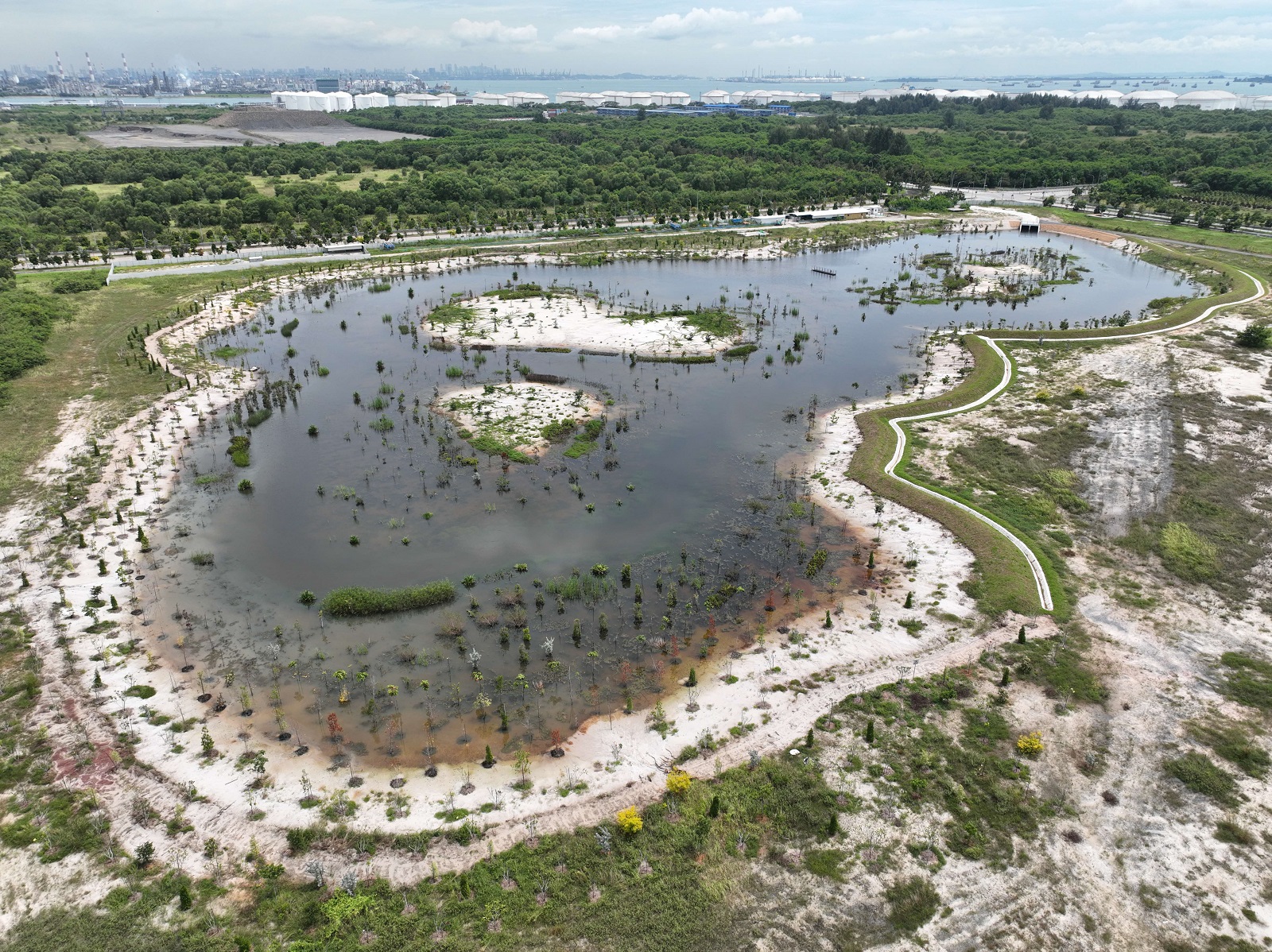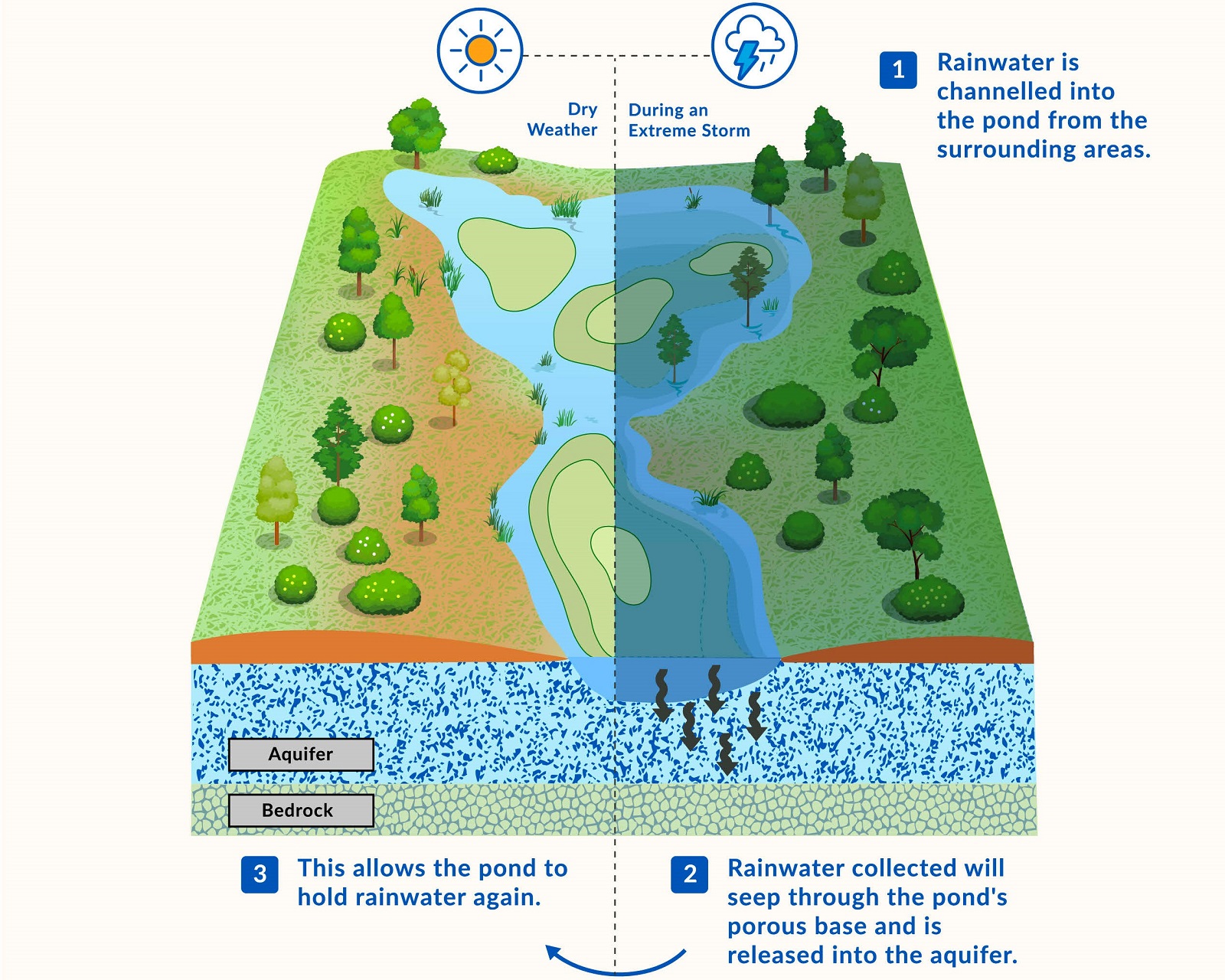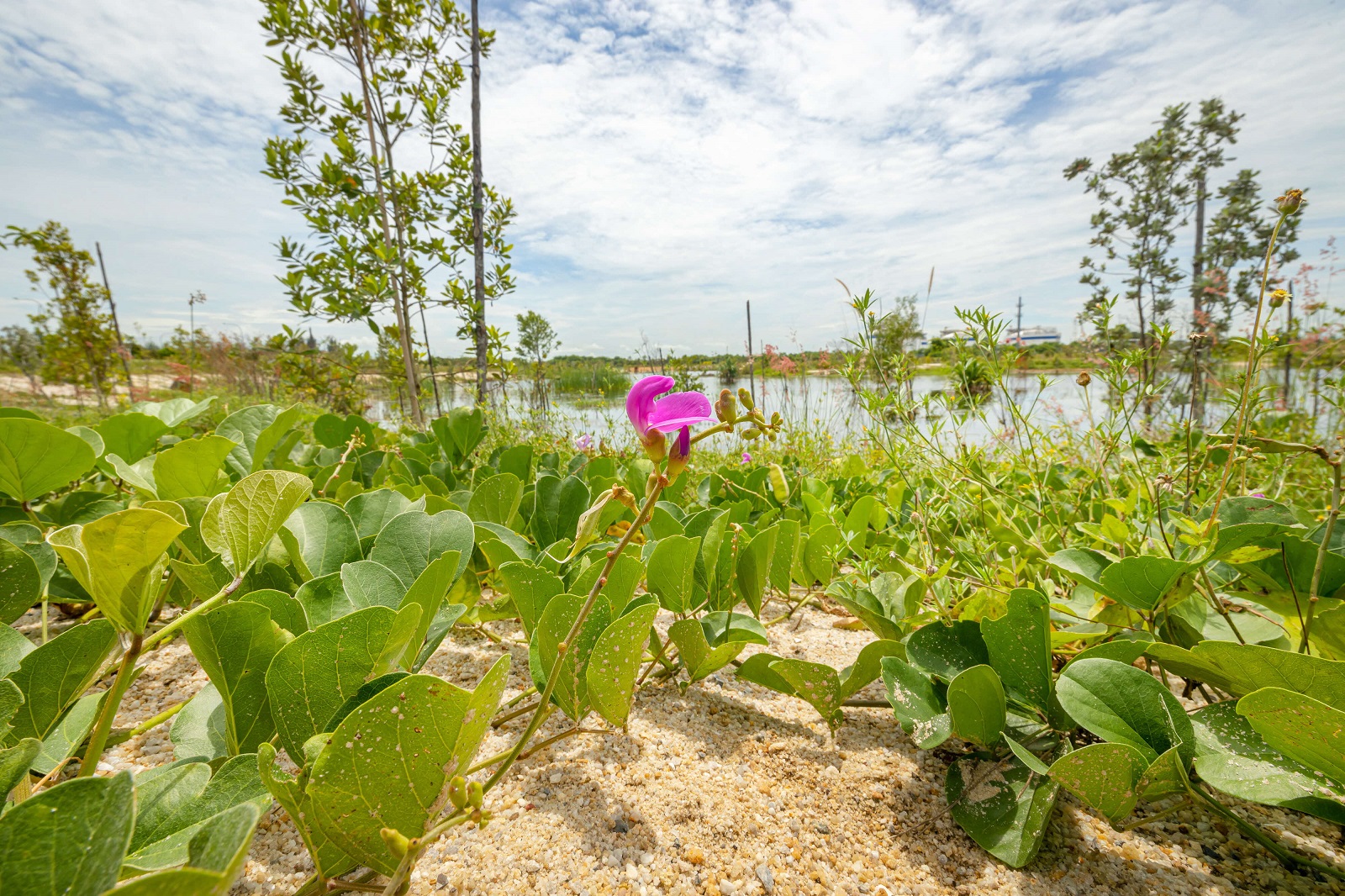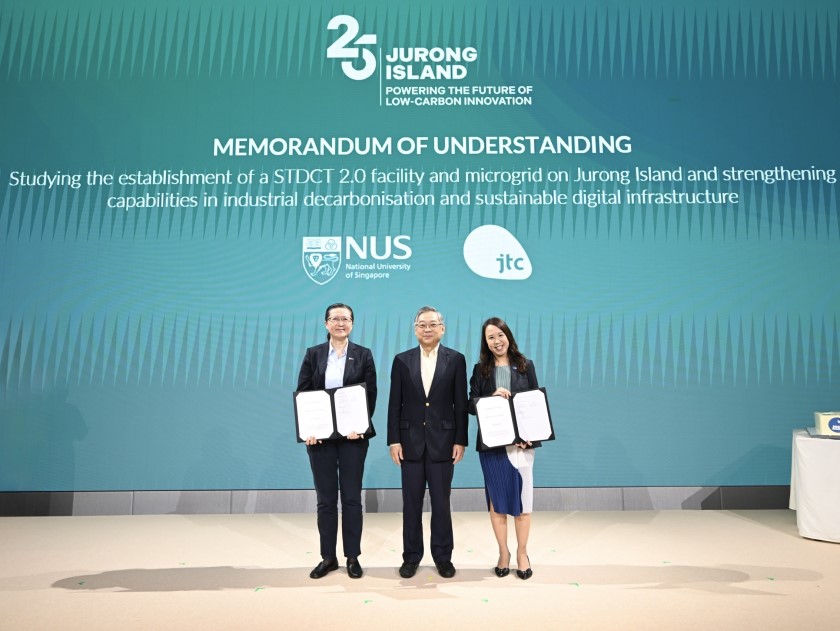According to the Centre for Climate Research Singapore, the country’s annual rainfall total has increased at an average rate of 67mm for every decade from 1980 to 2019. With climate change, we can expect more frequent and intense rainstorms. Singapore adopts a stormwater management strategy that includes ensuring adequate drainage for new developments, continual drainage improvement as well as implementing flood protection measures.
Jurong Island is one of the locations in Singapore that has low-lying areas and coastlines, and houses critical infrastructures required for our energy security and economy. Hence, JTC is test-bedding a nature-based solution on the island that works to enhance flood resilience against future projections of more intense and frequent storms due to climate change. Known as the Jurong Island pond, this solution covers an area of about 8.9 hectares (equivalent to 17 football fields) and is designed to make use of existing ground conditions to build up flood resilience.
“With the combination of expertise from urban design and engineering and our understanding of Jurong Island’s unique geological features, we were able to come up with this nature-based solution to future-proof Jurong Island, ensuring that it remains economically viable and also sustainable in the face of climate change,” explains Mr Tan Chee Kiat, group director of engineering at JTC.
Here are four things to know about the Jurong Island pond.
1. The pond is the first of its kind in Singapore

The Jurong Island pond can hold up to 125,000m³ of rainwater — enough to fill 50 Olympic-sized swimming pools. It is built above an underground body of water-bearing permeable sand known as an aquifer. After a storm, rainwater will seep through the pond’s porous base over time and collect in the aquifer, which naturally discharges into the surrounding seas. Once the pond empties, it will have the capacity to hold rainwater again. Because of this, it increases the storm water management capacity of the area, mitigating the risk of flooding from the more frequent intense rainfall event arising from climate change.

2. Much of the design was done by JTC engineers
In 2020, JTC engineers conducted on-site studies to identify innovative and sustainable ways for the drainage system on Jurong Island to cope with episodes of intense rainfall. The team tapped the discovery of an aquifer that had formed naturally over time. Eventually, through detailed hydraulic simulations, they realised the idea of building a pond above the aquifer was feasible. This method would reduce the need for massive upgrades to the drainage infrastructure, which can be costly and resource intensive.
Renowned urban planner and landscape architect Professor Herbert Dreiseitl, who previously worked on conceptualising and naturalising the drainage channel at Bishan-Ang Mo Kio Park, was engaged as a consultant during the early stages of the design of the pond. The engineering design was subsequently handled by JTC engineers. Detailed hydraulic simulations were carried out to ensure the pond was sited in the most ideal location and of the optimal dimension and size.
Construction of the pond began in March 2021 and was completed in March 2022.

3. It’s more than just a tool for flood resilience
The pond also provides an opportunity to add more green spaces and biodiversity on Jurong Island, which will help to lower the urban heat island effect, beautify the landscape, and make it more conducive and attractive to businesses that operate within the island.
With support from National Parks Board (NParks), more than 1,500 trees and 25,000 shrubs, flowers, and other wetland vegetations have been planted in and around the pond. The self-regulatory function of the pond would mean that during dry seasons, water in the pond can be used to irrigate trees on Jurong Island. The pond can hence, supply water to the plants and biodiversity in and around the pond.
4. Can the ingenuity of the pond be replicated elsewhere?
The unique geological makeup of the Jurong Island (for example, ground conditions with high infiltration, and the existence of the aquifer) allowed for this pond to exist. However, every site is different and for this to be replicated elsewhere, similar conditions need to be present and then studied.


